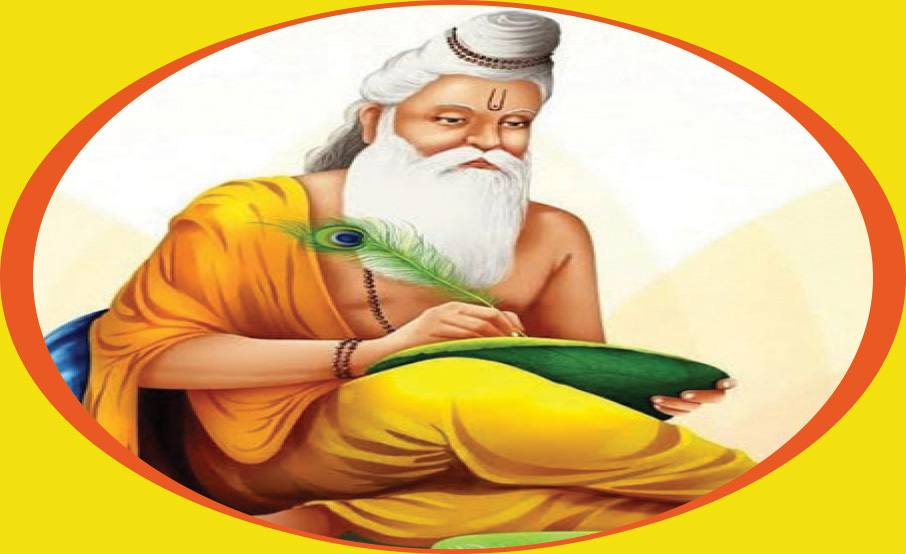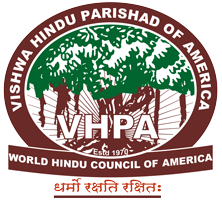Two of the greatest epics, Ramayana and Mahabharata, are the greatest gifts of India to the world. Both were composed originally in Sanskrit language and have now been translated into almost all major languages of the world.
Below translations of Shloka 1-43 of Chapter two from Ramayana reveals how this great epic came into being.

Once upon a time, at the request of Maharishi Valmiki, Devarishi Narad narrated the story of Lord Shri Ram to him. Maharishi Valmiki was a master of language and a saint. Some time had passed after this, Maharishi Valmiki and his disciples were walking near the beautiful Tamsa river, a tributary of the Ganga. There was a small beautiful open space between forest and river. While enjoying the beauty of nature, Maharishi Valmiki turned towards his disciple Rishi Bhardwaj and remarked, “This place is so lovely with clear water and sandy beach. Dear vatsa [son]! Put down the kalash (water jug) and give me my bathing garment. I would like to take a bath at this beautiful place.” The obedient disciple gave him the clothes. While bathing, Maharishi Valmiki saw a pair of Kronch birds making love and making melodious sound on a large tree branch. Suddenly, a cruel hunter came and killed the beautiful male Kronch. The hapless bird fell to the ground. His mate, the female Kronch, was crying and flying in circles. A few moments ago, she was so happy with her red-headed companion. Now, she was separated by the cruel hunter. Maharishi Valmiki became very sorrowful and was emotionally charged at the wanton act of the hunter. At that instant, these words came out of his mouth.
mā niṣāda pratiṣṭhāṁ tvamagamaḥ śāśvatīḥ samāḥ
yat krauñcamithunādekam avadhīḥ kāmamohitam
Oh, hunter! You have killed one of the mating Kronch pair. You won’t live long. Soon thereafter, the grieving Maharishi Valmiki realized that he should not have cursed the hunter at the death of the bird. This is against my nature, he said to himself.
This beautiful shloka is in Anustup Chhand
(a meter), which has 32 syllables in Gandhara svar (musical tone) and can be sung perfectly with musical instruments. Rishi Bhardwaj who was near him also liked it so much that he happily crammed it. Both the guru and his disciple were overwhelmed by the words were uttered. Later Lord Brahma visited Maharishi Valmiki. Maharishi Valmiki welcomed and enquired about his visit. Lord Brahma told Maharishi Valmiki that your sentence was a mantra. You spoke it because of my desire. O Rishi! Now, in this Anustup Chhand, you should write the story of dharmatma and intelligent Shri Ram. You should also write and sing Lord Shri Ram’s life story chronologically the same way as you heard from Narad. You will remember everything in detail. The Ram Katha [story] you compose will become immortal. Maharishi Valmiki wrote the great epic Ramayana in 24,000 shlokas obeying the desire of Lord Brahma.
There is a controversial story about Maharishi Valmiki’s life in Ram Charita Manas. Maharishi Valmiki is portrayed as a robber who was a killer, illiterate, ignorant, and a cruel man who lived in the forest. He robs and kills travelers passing through a forest to support his family.
Devarishi Narad visited him once but could not get anything useful from him. Devarishi Narad roamed with his saffron attire, knotted hair fastened with rudraksha mala, prominent smile with Tanpura reciting Narayan Narayan. Narad’s recitation further annoyed Valmiki, so he decided to kill Narad. Witty Narad told him that robbing and killing people is a great sin. He asks him to confirm if his family approved of his ways. Valmiki asked his family, and they refused to have anything to do with his sins. So, Valmiki accepted Narad’s advice and started reciting Ram, Ram shloka.
One day he was sitting under a tree and chanting Ram’s mantra. On the branch, a pair of kronch birds were amorously enjoying. A hunter kills the male partner, and the injured dying bird fell in the lap of Valmiki. Suddenly, the famous shloka came out of Valmiki’s mouth.
This story is an insult to Maharishi Valmiki. According to the Ramayana, he was already a saint and well-known Rishi with disciples like Bhardwaj. This flimsy story has no merit. This version is quite prevalent, particularly in north India. The Ramayana was written in Sanskrit language, a language of scholars, and not of ordinary people. In the sixteenth century, Ram Charitra Manas was written in poetry form by Tulsidas in the popular Hindi language of north India. The Ram Charita Manas is still sold as Ramayana. In north India, in every Hindu home, one can find a copy of Ram Charita Manas. Unfortunately, it is not the same with Maharishi Valmiki’s Ramayan and it is not an ordinary epic. It is a powerhouse of knowledge. India’s geography, history, and culture are hidden in it. Intensively, one can find the names of trees, flowers, fruits, rivers, lakes, hills, mountains, waterfalls, medicinal plants, herbs, etc.
It is the greatness of Ramayana that the epic is composed in Anustup Chhand (meter), which has 32 syllables. The Ramayana has been translated into many major languages. Ramayana is known as Yamyana in Myanmar, Ramketri in Cambodia, Hikaya Seri Rama in Malaysia, Kakowin Ramayana in Indonesia, Lawana in Philippines, Phra Rama in Laos, Hebusu Shu in Japan and Ramkian in Thailand. It is also the national book of Thailand.
Lord Ram in Tulsidas’s Ram Charita Mansa is a God, but in Maharishi Valmiki’s Ramayana, Lord Ram is a hero of great epic who accepts failures and success on equal footing. This is Ramayana! A great epic.

